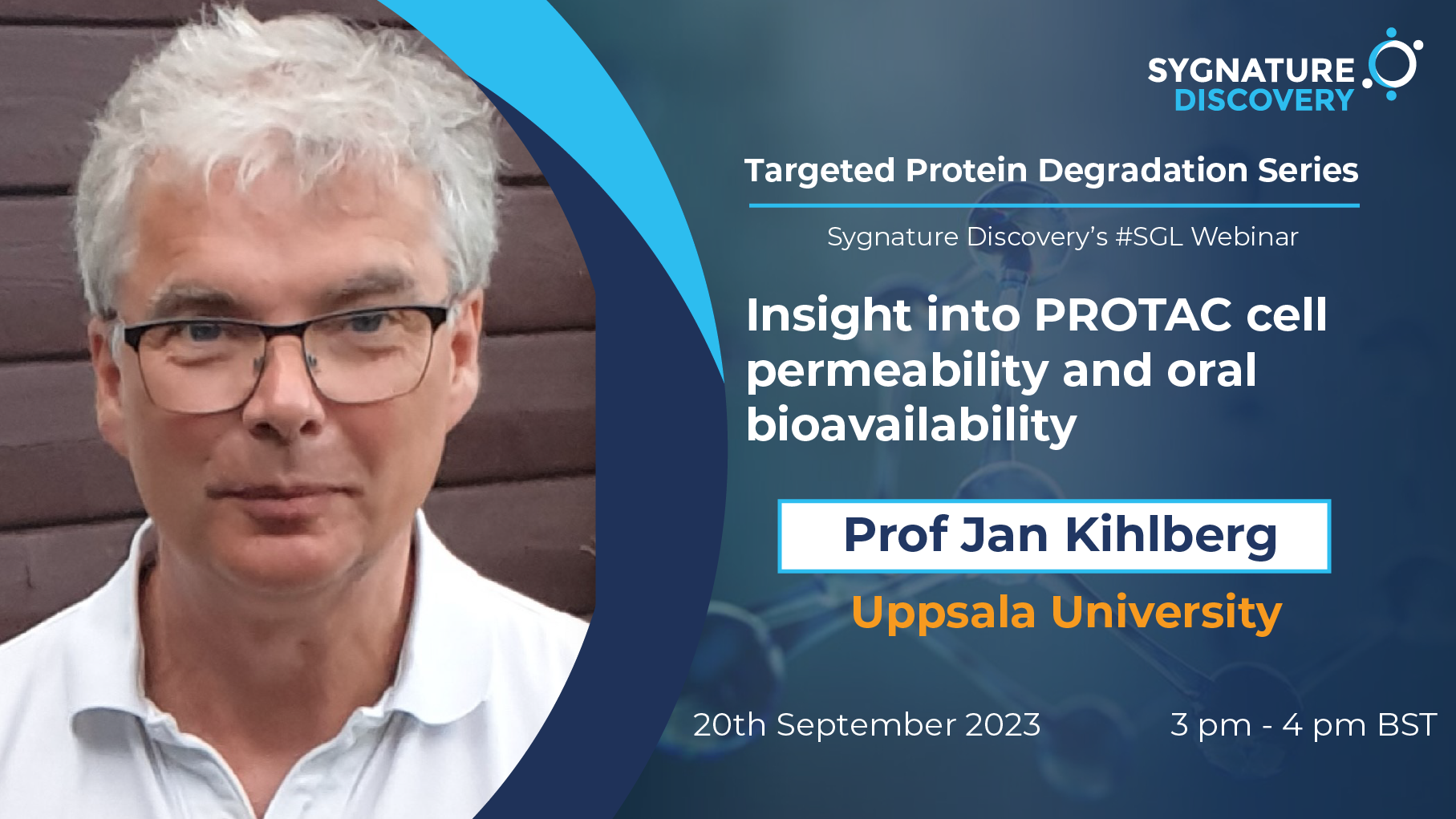Insight into PROTAC cell permeability and oral bioavailability


Prof Jan Kihlberg
Professor at Uppsala University
Register for the webinar here!
What will be discussed...
The oral bioavailability in rodents has been reported for close to 40 PROTACs. Most of those PROTACs that have a “druglike” bioavailability (>5%) are based on a CRBN E3-ligase ligand, but a few VHL PROTACs also display a bioavailability in that range. The use of 2D descriptors places oral drugs, CRBN and VHL PROTACs in different parts of the chemical space, while the use of 3D descriptors indicates that the chemical spaces overlap.
We have studied both CRBN and VHL PROTACs by MD simulations and/or NMR spectroscopy. These studies revealed that the propensity of the PROTACs to adopt folded and semi-folded conformations with low solvent-accessible 3D polar surface area correlated to higher cell permeability. The length, chemical nature and flexibility of the linker were found to be essential for allowing intramolecular hydrogen bonds, p–p interactions and van der Waals interactions to stabilize (semi)folded conformations for permeable PROTACs in a membrane-like environment. Permeable PROTACs also behaved as molecular chameleons and adopted their conformations and thereby their properties to the surrounding environment.
Predicting the conformations and properties of PROTACs is difficult and time-consuming. However, classification models that were developed by machine learning using 17 commonly used 2D descriptors allowed differentiation between PROTACs that had high or low cell permeability. Such models can be integrated as effective filters to prioritize PROTACs for synthesis in the design process.
About the speaker

Prof Jan Kihlberg
Professor at Uppsala University
Jan Kihlberg holds a chair in Organic Chemistry at Uppsala University, Sweden since 2013. His key research interests are to understand what properties convey cell permeability, aqueous solubility and target binding to drugs in the beyond the rule of 5 space and to translate this knowledge into guidelines for design. He has published close to 200 peer–reviewed publications and book chapters. Before moving to Uppsala Prof. Kihlberg spent 10 years at AstraZeneca R&D in Gothenburg, 7 of which as Director of Medicinal Chemistry.
"We chose Sygnature owing to their significant relevant drug discovery expertise, flexible business model and passion for the science they do"
Dr Neil Weir,
CEO,
Sitryx
Delivering for our customers - a proven track record

